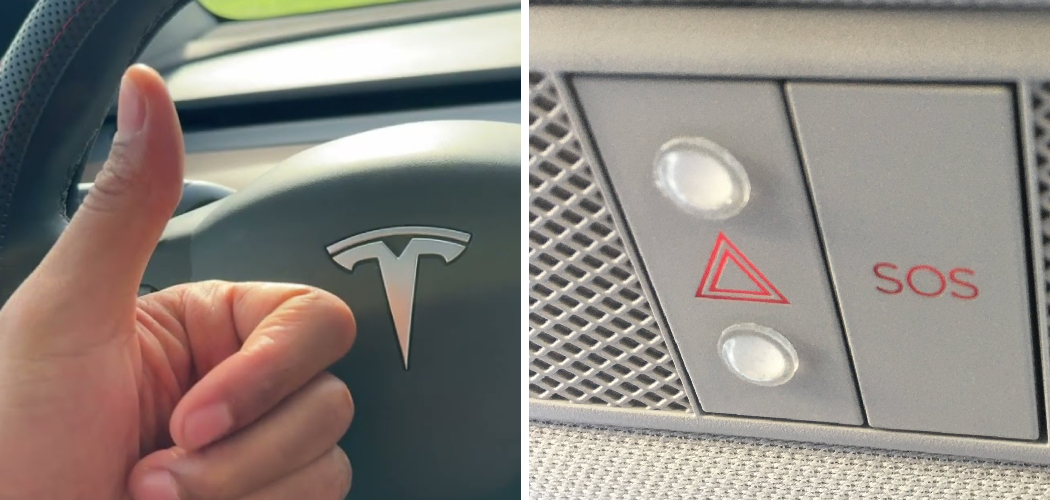Hazard lights, also known as emergency flashers, are an essential safety feature in any vehicle, including Tesla models. They are used to signal to other drivers that your car is stationary, experiencing a breakdown, or in an emergency situation. Understanding how to activate and properly use the hazard lights in your Tesla is crucial for ensuring safety on the road, especially during unexpected situations. This guide will walk you through the process of how to hazard lights tesla effectively.
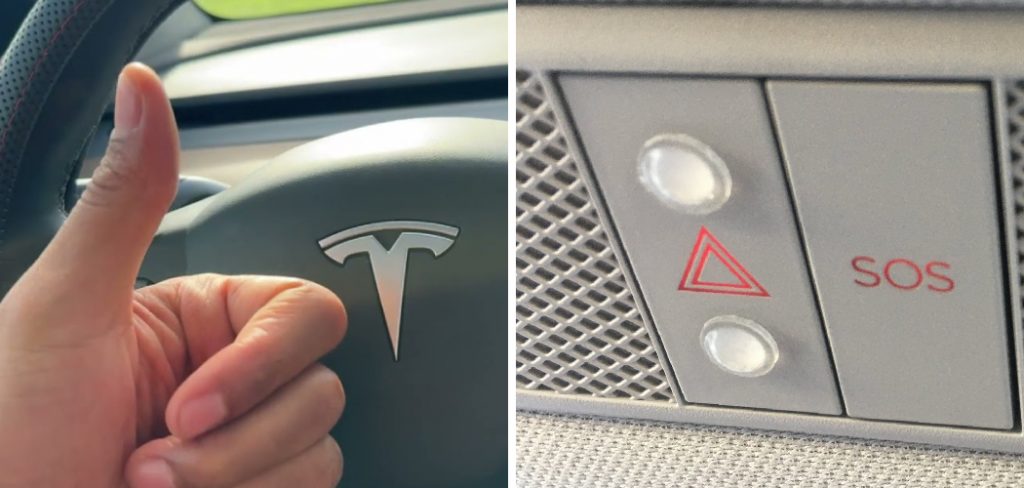
What Are Hazard Lights and When to Use Them
Hazard lights are flashing indicators on your vehicle designed to alert other drivers to potential dangers or unusual situations involving your car. By blinking all four turn signals simultaneously, hazard lights communicate a universal message of caution on the road. While their primary purpose is safety, using them appropriately is key to avoiding confusion or misuse.
You should use hazard lights in specific scenarios, such as when your vehicle is broken down on the side of the road, stalled in traffic, or involved in an accident. Hazard lights are also helpful in extreme weather conditions, such as heavy rain, fog, or snow, where visibility is severely reduced. Additionally, they can be used to signal to other drivers when you are moving significantly slower than the flow of traffic due to an emergency. Remember, the proper use of hazard lights varies by region, so always check your local traffic laws to ensure compliance.
10 Methods How to Hazard Lights Tesla
1. Using the Physical Hazard Light Button
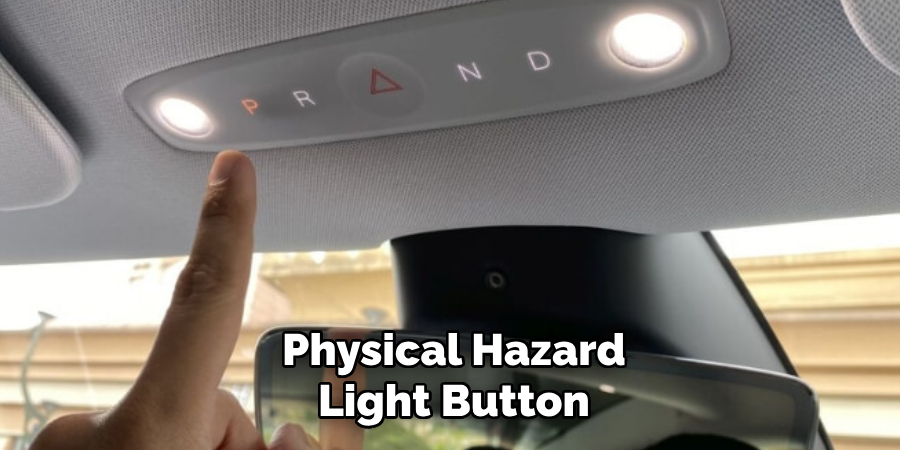
One of the most common methods for activating the hazard lights in a Tesla is by using the dedicated hazard light button, which is located on the dashboard. This button is typically found near the center console of most Tesla models, directly in the vicinity of the infotainment screen. When pressed, the button illuminates a red or amber light to indicate that the hazard lights are on. This is the quickest and most direct way to activate the hazard lights, especially in emergency situations when you need to alert other drivers immediately.
2. Activating Hazard Lights Through the Touchscreen
Tesla’s large, touchscreen interface is another way to activate the hazard lights. By navigating to the “Car” section on the display, you will find an option to control various vehicle functions, including the hazard lights. While this method may not be as instantaneous as using the physical button, it provides a more digital approach to activating the hazard lights. This is particularly helpful for owners of newer Tesla models that may have customized settings or software updates that modify the controls.
3. Using Voice Commands
In more recent Tesla models, voice control has become a central part of the vehicle’s user interface. By simply saying, “Turn on hazard lights” or “Activate hazard lights,” the car will automatically respond by engaging the hazard lights. This method is both hands-free and convenient, particularly when driving and needing to keep your attention on the road. The voice command system recognizes a variety of verbal instructions, making it a highly effective method for activating hazard lights when your hands are occupied or when you wish to avoid distraction.
4. Engaging the Hazard Lights While in Park
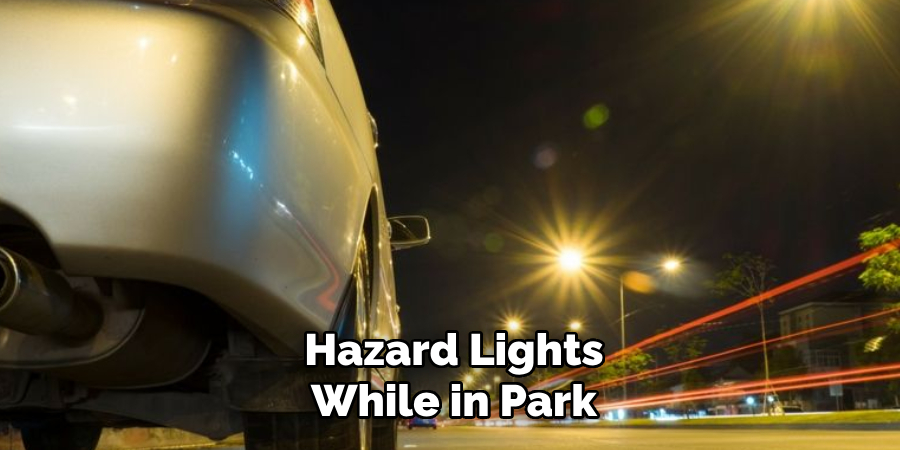
Sometimes, drivers may want to engage the hazard lights while the car is in park, whether they are waiting for a tow, loading cargo, or simply stopping for a short break. In Tesla vehicles, this can be done either by pressing the hazard light button located near the dashboard or selecting it via the touchscreen interface. It’s important to note that even when the car is parked, the hazard lights should be used responsibly to prevent confusion or miscommunication with other drivers.
5. Activating the Hazard Lights via Steering Wheel Controls
On certain Tesla models, particularly those with more advanced steering wheel configurations, hazard lights can be activated using the steering wheel controls. By pressing or rotating a specific control on the wheel, the hazard lights can be engaged. This method is highly convenient since it allows the driver to activate the hazard lights without taking their hands off the steering wheel, which can be particularly useful in tight situations or heavy traffic.

6. Using the Tesla Mobile App for Remote Activation
In addition to in-car methods, Tesla owners can also use the Tesla mobile app to activate various functions, including the hazard lights. By accessing the vehicle’s control menu from your phone, you can toggle the hazard lights on or off, which may be helpful in certain situations such as parking or remotely signaling to others while the car is not in use. This method adds an additional layer of convenience, allowing you to manage the car’s functions from a distance.
7. Automatic Hazard Light Activation in Emergency Braking
Tesla vehicles are equipped with advanced safety features, such as Automatic Emergency Braking (AEB), which can detect potential collisions and apply the brakes if necessary. In some Tesla models, when the AEB system is engaged, the hazard lights may automatically activate as part of the vehicle’s safety protocol. This is done to alert other drivers that an emergency situation is unfolding, and it helps to prevent accidents or further complications by making your vehicle more visible.
8. Activating the Hazard Lights During Autopilot Mode
Tesla’s Autopilot system is a key feature in their electric vehicles, providing semi-autonomous driving capabilities. When driving in Autopilot mode, if a situation arises that requires the vehicle to signal an alert to other drivers—such as a sudden slowdown, emergency stop, or a malfunction—hazard lights may automatically be engaged as part of the system’s safety protocol. This automatic activation ensures that other drivers are aware of your vehicle’s actions and can react accordingly.
9. Switching on Hazard Lights Using the Car’s Navigation Settings
Tesla’s sophisticated navigation system, integrated into the central touchscreen, can also be used to influence vehicle behavior in certain situations. For instance, if you are navigating a route that suggests potential hazards ahead (e.g., construction zones or traffic incidents), you might see a prompt on the screen to activate the hazard lights. While this is not a universal feature, Tesla’s continuous software updates often introduce new ways to enhance user experience, and this could be one of the features added in future updates.
10. Manually Setting the Hazard Lights via Car Settings
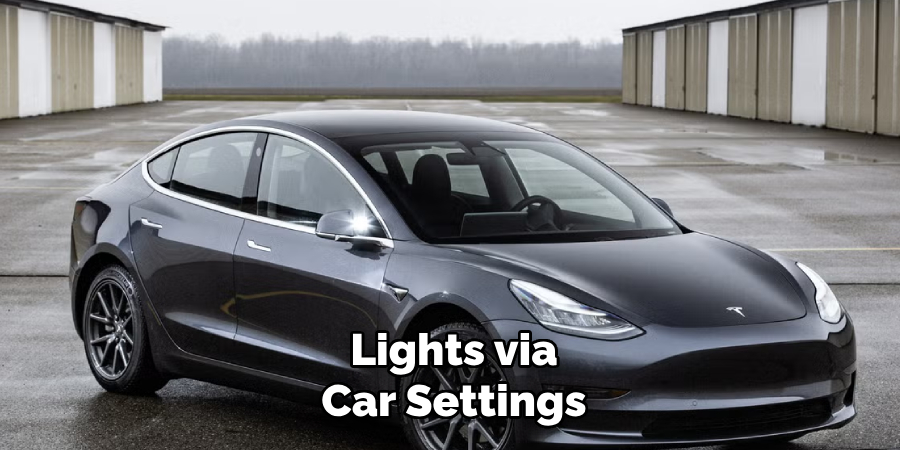
Some Tesla models may allow for the customization of various features, including the control of hazard lights, through the vehicle’s settings menu. If you prefer a certain method for activating the hazard lights, such as a preference for voice commands, touchscreen controls, or physical buttons, you can set it up via the car’s settings. Customization can help make driving more intuitive and personalized for each individual Tesla owner, allowing for greater ease of use when managing essential functions like hazard lights.
Safety Considerations
When using hazard lights, it’s essential to keep safety at the forefront. Hazard lights are primarily designed to signal to other drivers that your vehicle is stopped or moving unusually due to an emergency situation. Misusing hazard lights, such as activating them while driving under normal conditions, can cause confusion and potentially increase the risk of accidents.
Always ensure your vehicle is in a safe location before engaging hazard lights, and be mindful of local traffic laws regarding their use. Regularly familiarize yourself with your Tesla’s hazard light controls to ensure quick access during critical moments, as prompt activation can be crucial in avoiding further incidents.
Common Mistakes to Avoid
When using hazard lights, there are a few common errors that drivers should be mindful to avoid. One of the most frequent mistakes is using hazard lights in non-emergency situations, such as during heavy rain or fog, where headlights and fog lights are more appropriate for visibility. Another error is forgetting to turn off hazard lights after the vehicle is no longer in a hazardous situation, which can confuse other drivers and lead to unnecessary distractions.
Additionally, some drivers mistakenly believe hazard lights grant them permission to park in no-parking zones, which can result in fines or even endanger other road users. Finally, relying on hazard lights while driving in moving traffic can send mixed signals to other drivers, increasing the likelihood of accidents. Understanding these missteps and using hazard lights correctly will enhance both personal safety and overall road safety.
Conclusion
The ability to customize essential vehicle functions, such as hazard lights, underscores Tesla’s commitment to providing a seamless and user-centric driving experience. By allowing drivers to tailor their car settings to their preferences, Tesla not only enhances convenience but also promotes safer and more intuitive vehicle operation. This level of adaptability ensures that every driver can enjoy a personalized and efficient interaction with their Tesla, making each drive both comfortable and enjoyable. Thanks for reading, and we hope this has given you some inspiration on how to hazard lights tesla!

